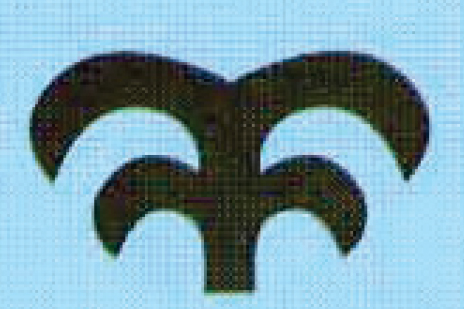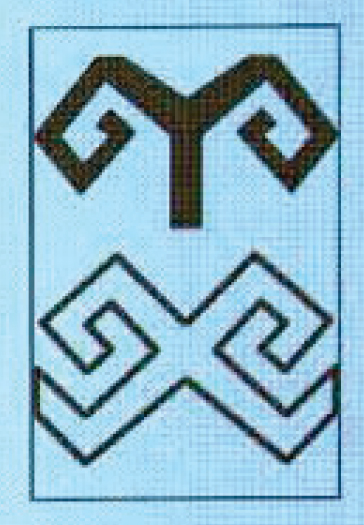




The Qoshqar muiiz ornament represents two spirals emanating from a single stem – a horn. It is one of the oldest bases of Kazakh ornamentation (leitmotif) and has several graphic variants and names. In general, horns are a general cultural archetype and the oldest symbol of royalty, an attribute of symbolism of kings, leaders and other people. In world culture there are enough divine persons with horns, both female and male: the Egyptian Hathor, the Greek Amalthea, a favourite symbol of ancient poets, etc. This graphic archetype reflects the power, the divine gift, the masculine qualities (including fertility) and at the same time the sign of a warrior. In most cases, it is associated with masculinity.
A variety of horn-like curls are often used to decorate syrmaq, tekemet, alasha and other textiles. In Kazakh culture, the ram’s horns symbolise qut – vitality, grace, prosperity and well-being.

In the natural philosophy of Turkic peoples, the ram (qoshqar) was considered the only animal that was in paradise, and it is destined to be used as a ritual animal in sacrificial rites. The pattern is common in the art of many Turkic peoples.
One of the derivatives of “qoshqar muiiz” is the motif “qos muiiz” (paired horns), which is semantically connected with the image of the world tree. It played a key role in protective magic. Another derivative of koskhar muiiz is syñar muiiz (a horn) – a symbol of a prosperous life and ritual sacrifice. It is the equivalent of material prosperity.

According to another version, the rosette “qos muiiz” is a symbolic representation of the land in a state of tranquilly and harmony, which gives life to all living beings. This meaning was originally inherent in the ornament before the economic way of life changed to a nomadic one.
.


